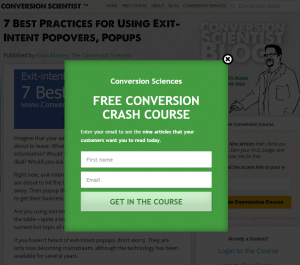There’s little doubt that employee engagement has been in a difficult place the last few years. And, Gallup’s State of the American Workplace report doesn’t paint a prettier picture, telling us that only 33% of employees are engaged in their job and a whopping 51% are actively looking for new employment. And what’s worse, a large majority of employees are not only unhappy at work, but quite a few are ready to sabotage the company they are unhappy within. Additionally, companies face the knowledge that organizations with a low level of employee engagement see a 33% decrease in operating income.
This knowledge has inspired amazing initiatives leaders hope will fill employees with a renowned sense of satisfaction and organizations are taking critical looks at performance management processes, considering real-time/increased feedback initiatives and even establishing employee appreciation programs.
But, while these are important to the continued health of professionals, the truth is that some of the responsibility of engagement falls to the shoulders of the employee. Yes, that’s right. Not every engagement problem is because of management. Sometimes, it’s simply a case of the wrong employee in the wrong place at the wrong time.
This is why talent acquisition can play an essential role in increasing employee engagement by using recruitment tactics help discover candidates who, with the right guidance, have the proven potential to be highly engaged employees. Here’s how we do it at Red Branch Media:
1. Create a candidate experience that reflects your company culture
I mentioned that engagement is a shared responsibility. For example, it is up to the employee to do their best work, communicate challenges with leadership and choose the appropriate attitude for approaching various situations with teammates and projects. However, in order to set that expectation for new employees, It’s important to communicate how your company works and set the right expectations during the hiring process.
At Red Branch, hiring is a step-by-step process that allows me to add a personal touch to each communication with my candidates. In the first few stages, I’m looking at resumes and considering where the individual will fit and then scheduling phone screenings. From there, we invite the candidate into the office to meet with the team. This happens, if scheduling allows, within 1 to 3 weeks of receiving a resume. If it at any point the candidate doesn’t seem to be a fit, then there’s no hesitation to say so. Leaving a candidate in limbo for fear of giving a little rejection hurts their ability to find the right job and my ability to sleep at night.
Keeping to this fast turnaround and back and forth communication for the first few weeks of the getting to know you stage primes the engaging piece of the relationship. When you’re quick to hustle the scheduling interviews and team meetings, it doesn’t give candidates time to drag their feet. This sets the pace for how things work in your company for candidates. If they can’t keep up or catch on to this fast pace process, chances are, they won’t be willing to pick up the pace post-hire and won’t be an engaged employee.
2. Take time to understand the candidate’s attitude
I’m a firm believer in hiring for attitude and training for skill. Not only does it find the right hire for your organization, but also for your processes. In other words, I find hires that fit my team, company and the way I lead. It means hiring a temperament that can bring something needed to my organization/department. It means allowing personality and work ethic to be an important factor in finding the right person for the job.
Employees with the highest engagement are usually doing jobs that inspire and intrigue them or, at the very least, working alongside a team or for a cause they care about. If you want a new hire to be excited on day one and on, you will take the time to consider whether they match the position past their skill capabilities.
Here’s how to find the right attitude:
- Include identifying words in your job descriptions that allow job seekers to self-select and remind hiring managers what a successful hire would be.
- Create “Day in the Life” videos that showcase the office environment, customer/client base or even the daily activities of someone in the same position so they can connect to the organization/role.
- Ask candidates to identify the part of the organization resonates with them most (i.e. mission, audience, daily work tasks, etc.)
- Discuss the candidate’s professional aspirations and how those align with the job.
- Establish a pre-hire assessment that follows the same process as an internal project.
To find employees with an attitude that matches your company culture, think about your company values and what kind of personality traits it takes to brave each of your departments or the organization as a whole. Think about soft skills like, great communicators, patient, not afraid to be bold and honest, etc. These are the skills that are embedded in people’s hardwire- skills that can’t be changed or taught, but can enhance the tasks you’re looking for to produce knock-out performance results.
3. Continue onboarding after the candidate joins and provide learning opportunities
This is actually a multi-faceted statement. For one, recruitment of a particular hire will not end once they accept a position. The days and weeks that follow will decide whether they are a fit for your organization, as 20% of employee turnover occurs in the first 45 days of employment. There’s a lot that can go into the decision to leave right after beginning, which is why taking the time to welcome new hires with an onboarding program is so pivotal. Discover how your new hire’s goals can translate into the work of your company.
Within the first two months of a new hire’s employment, I sit down with each newbie individually and give a mini performance review. I ask what they’ve learned, how they’d like to better use their time (i.e. any special new departments or tasks they were exposed to they’d like to try). This assessment gives employees a chance to live the brancher life long enough to be fully onboarded, understand their duties and learn where they want to go next or work toward.
A large part of the reason Red Branch Media has branched out (excuse the pun) into a well-established full-service agency is our dedication to continued learning. In fact, if it weren’t for my employees having the freedom to include personal interests in their work, we wouldn’t have a comprehensive approach to some very important offerings (SEO and PR, to name a few). Doing this will, as mentioned benefit your organization, but will also keep your employees excited about their work and engaged.
The other meaning behind this statement is that how you handle recruitment and onboarding for one candidate can have direct influences on how the next string of applicants act. If they’ve heard great things about your company from friends, family and forums, you can bet they will be more apt to apply. However, the very opposite is true, too. People talk and they appreciate the opinions of outsiders more than they trust your word. Call it cynical, but workers believe companies are capable of talking up their employment programs far more than they deliver.
There’s a lot that goes into finding the right hire and keeping that hire engaged throughout their career at your company. There’s not one formula that works for all organizations or industries, but taking the time to analyze an applicant on their ability to thrive within the environment you plan to hire them for is absolutely necessary. You might get it wrong a few times, but more often than not, your diligence will land amazing people who get. Stuff. Done.
Business & Finance Articles on Business 2 Community(57)
Report Post





